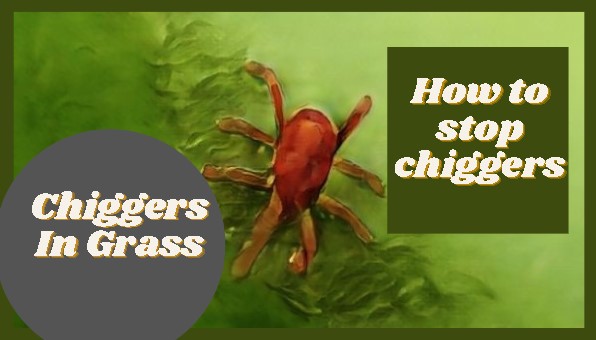Subscribe
Stay updated with our newsletter
Conclusion
Hopefully by now you know how to identify, get rid of and prevent chiggers in your grass. These critters are annoying to deal with but not impossible.

Chiggers, more commonly called red bugs or harvest mites, are tiny mites that live in grass and leaves. They lay their eggs there and wait for a body to come along so they can feed on it. Chiggers do not fly and cannot jump from host to host; instead, they wait until an animal or human passes by and then climb on board quickly. The good news is that chiggers don't transmit diseases like mosquitoes do. The bad news is that they're itchy little buggers who will make you miserable if you don't get rid of them fast.
Chiggers, also known as harvest mites, are small arachnids that live in tall grass. They do not like to be exposed to the sun, which is why you find them living on tall grass that hasn’t been mowed or fertilized. The chiggers will also hide in the less-fertile parts of your lawn where there isn’t much water available for growth.
Chiggers are arachnids, not insects. They are about 1/8 inch long and red or brown in color. Chigger larvae resemble ticks as they have eight legs and two body segments. The head has six eyes (compared to the two found on ticks). A chigger's mouthparts aren’t visible from the outside, they typically feed in the area between skin cells using a tube-like mouth structure called a stylet that can pierce through human skin. This is why chiggers are sometimes called “red bugs” or harvest mites because they tend to feast on crops like wheat after harvest time when farmers cut down their fields and leave behind these pests for unsuspecting hikers, campers, and others who cross paths with them later on in the year.
The easiest and most effective way to keep chiggers out of your grass is with a repellent. These sprays are applied directly to the grass, preventing chiggers from entering. They typically last for up to 30 days, but it's important to remember that no product can guarantee 100% effectiveness against these pests.
There are different types of repellents available for use in areas around your home or yard:Chiggers are tiny mites that live in grass and lay their eggs in the soil. They jump onto humans and animals, who then carry them elsewhere when they brush up against the grass or plant where chiggers are present. Luckily, there are several things you can do to help prevent chigger bites.
Chiggers bites are red, itchy and sometimes painful. A chigger bite usually starts out as a small spot on the skin that grows into a larger, red bump. The swelling often causes pain or burning sensations. Some people have bumps that look more like blisters than raised areas of skin. The bumps may also be hot to the touch, which indicates that they're infected with bacteria from chigger mouths.
If you want to know how to prevent chigger bites, read this article i wrote on the matter.
Stay updated with our newsletter
Hopefully by now you know how to identify, get rid of and prevent chiggers in your grass. These critters are annoying to deal with but not impossible.
As an Amazon Associate I earn from qualifying purchases.
We are a participant in the Amazon Services LLC Associates Program, an affiliate advertising program designed to provide a means for us to earn fees by linking to Amazon.com and affiliated sites.